Text and image, ink and blood, alchemy and chemistry, narrative and whimsy are some of the vectors shaping Paul Forte‘s vision in the Apothecary (which in its invocation of magical potions and dark arts shares a motif with Paul McQuade’s short story “Hadean” also in this issue). Ten bottles on a shelf, filled with ink (the most magical and potent solution of all when you think about it), bits of story from old books glued to the front, lined up like an apothecary’s display. Transmutation of the word into ink and back again.
One bottle and the full shelf are shown above. Detail images below, including the full text of the excerpt pages glued to the bottles.
dg
Notes on a hybrid artwork: Apothecary
Spirit and Soul should be added to the body and taken away (Solve et Coagula).[1]
—Lambsprinck De Lapide Philosophico[2]
Apothecary is a hybrid artwork based on a simple idea: fill a series of ten bottles with black ink and then “label” each bottle with a small facsimile of a chapter page from an old novel. Apothecary uses ten identical lab bottles, each approximately 3 inches in diameter by seven inches high and filled with about a half a liter of ink. The bottles rest on a narrow wood shelf. The pages used to make the labels were selected from scores of old books; the first page of ten chapters in a book was removed and collated with other book pages with the same chapter number. Selection of the final chapter pages used as labels were made with two structural constraints: 1) each numbered chapter (one to ten) had to have a chapter heading, or a brief synopsis of that chapter, and 2) the text on each page had to end with a complete sentence.
The strength of Apothecary, its vision or experimental significance, rests with the notion that the work is a series of potential stories — symbolized by ink in labeled bottles — stories yet to be written, and conversely that it is also a work of radical de-mediation, where writing or text is reduced to a series of chapter fragments that label a (traditional) literary medium: ink. These perspectives suggest an intermediate or indeterminate condition, but the work’s suspension between the possibility of writing on the one hand, and the display of a substance used to materialize it on the other, gives Apothecary its vitality as a hybrid artwork.
It’s interesting to note that the labels or reduced copies of the chapter pages play on the idea of concentration. The metaphorical reduction of writing to the material substance of ink is intended to induce the viewer-reader to reflect upon or focus on the work and thereby better appreciate the symbolic nature of the contents of the bottles: an elemental concentration; a material essence, a medium. The cognitive value of Apothecary has less to do with the formidable challenge it presents to making sense of a puzzling group of found texts, and more to do with how it encourages one to re-think the relationship between ideas and materials.
—Paul Forte
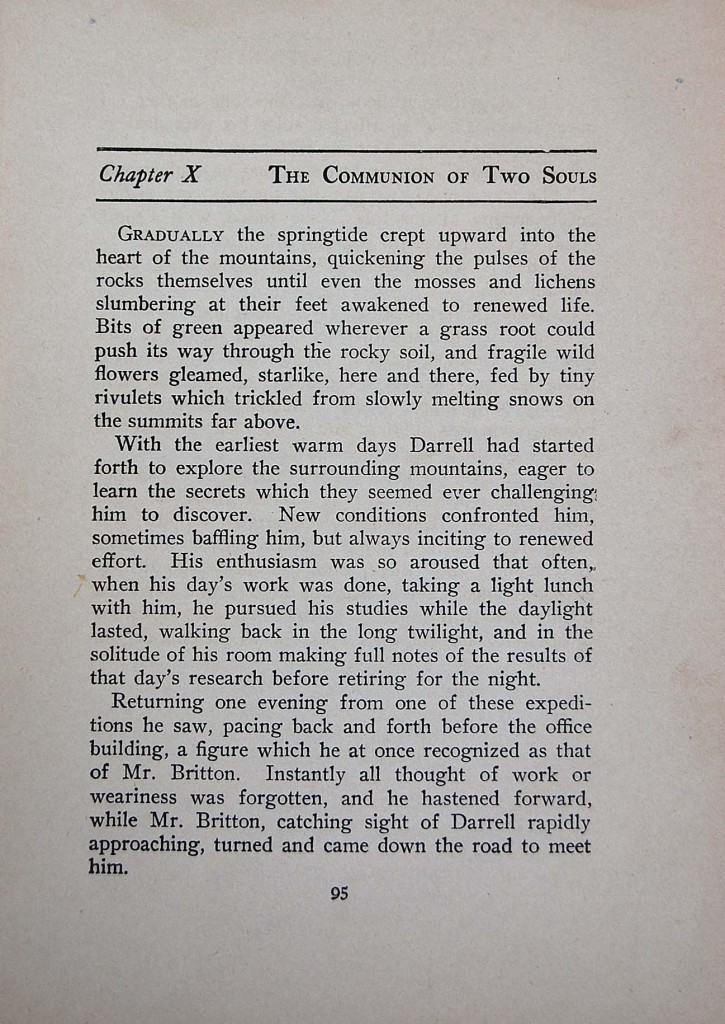
— Paul Forte
——————————————
Primarily a visual artist, Paul Forte also writes essays and poetry. Forte’s career as an artist began in the San Francisco Bay Area in the early 1970’s. Influenced primarily by conceptual art, Forte has employed a variety of media over the years to realize ideas, including making and self-publishing artist’s books and related objects. Forte’s work continues to explore the subjective and aesthetic dimensions of conceptual approaches to art making, an approach that he terms “cognitivist.”
Paul Forte has exhibited at The San Francisco Art Institute, San Francisco, California (1975,1976, 1983); A Space Gallery, Toronto, Canada (1978); 80 Langton Street Gallery, San Francisco, California (1981); The Center for the Visual Arts, Oakland, California (1986); The Wadsworth Athenaeum, Hartford, Connecticut (1991); the Kim Foster Gallery, New York City (1998); Hera Gallery, Wakefield, Rhode Island (2001, 2003), Francis Naumann Fine Art, New York City (2007 & 2008), and The Wattis Institute, San Francisco, California (2011). Forte’s work is included in the Sol Lewitt Collection, Chester, Connecticut; The Museum of Modern Art, New York City (artist’s books); and The Yale University Art Gallery, New Haven, Connecticut, among others. Forte has lectured on his work at Hera Gallery in Wakefield, Rhode Island; The University of Rhode Island (Honors Program); The Rhode Island School of Design; Brown University (Honors Program); Pratt Institute in Brooklyn, New York; The California College of the Arts, Oakland, California; and The University of California at Berkeley. Paul Forte is a past recipient of a National Endowment for the Arts, Artist Fellowship (1978), and a Pollack-Krasner Foundation Fellowship (1990). A resident of Rhode Island since 1987, Forte lives in Wakefield with his long time partner, Laura Beauvais.
Paul Forte’s web site is at pauljforte.com.
————
- Alchemical texts are notoriously difficult to decipher, due to the subjective nature of the formulas and procedures used by the alchemists. Be that as it may I offer the following interpretation of the above injunction: Spirit (symbolized by the common mineral, salt) and Soul (symbolized by the only liquid metal, mercury) should be combined and heated in a retort (the body) to produce an amalgam. If this process resulted in a “peacock’s tail” (an iridescent residue) then the adept was a step closer to realizing the venerated “philosopher’s stone.”
↵ - I don’t have access to the specific source of the quote that I use in my text, the manuscript Lambsprinck De Lapide Philosophico, Frankfort, 1625. This is one of hundreds of entries in The Hermetic Museum, a sourcebook on alchemy and mysticism edited by Alexander Roob (Taschen books, 1997).↵

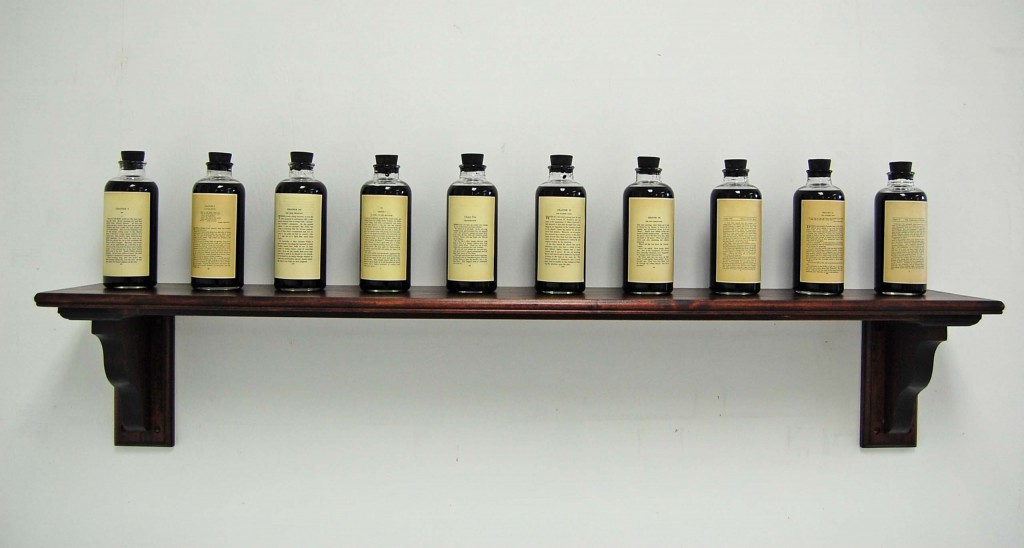
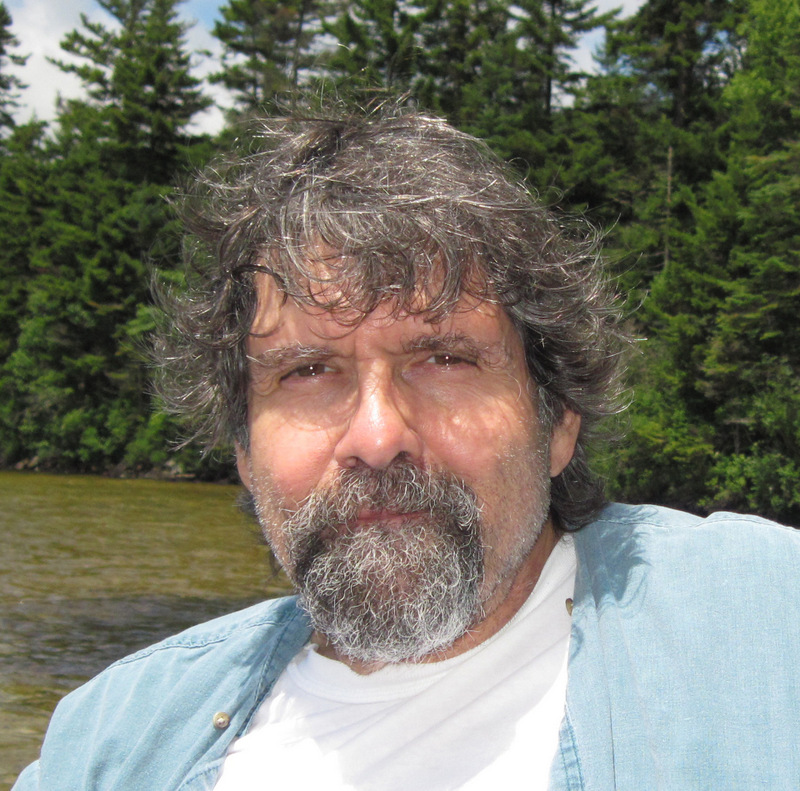
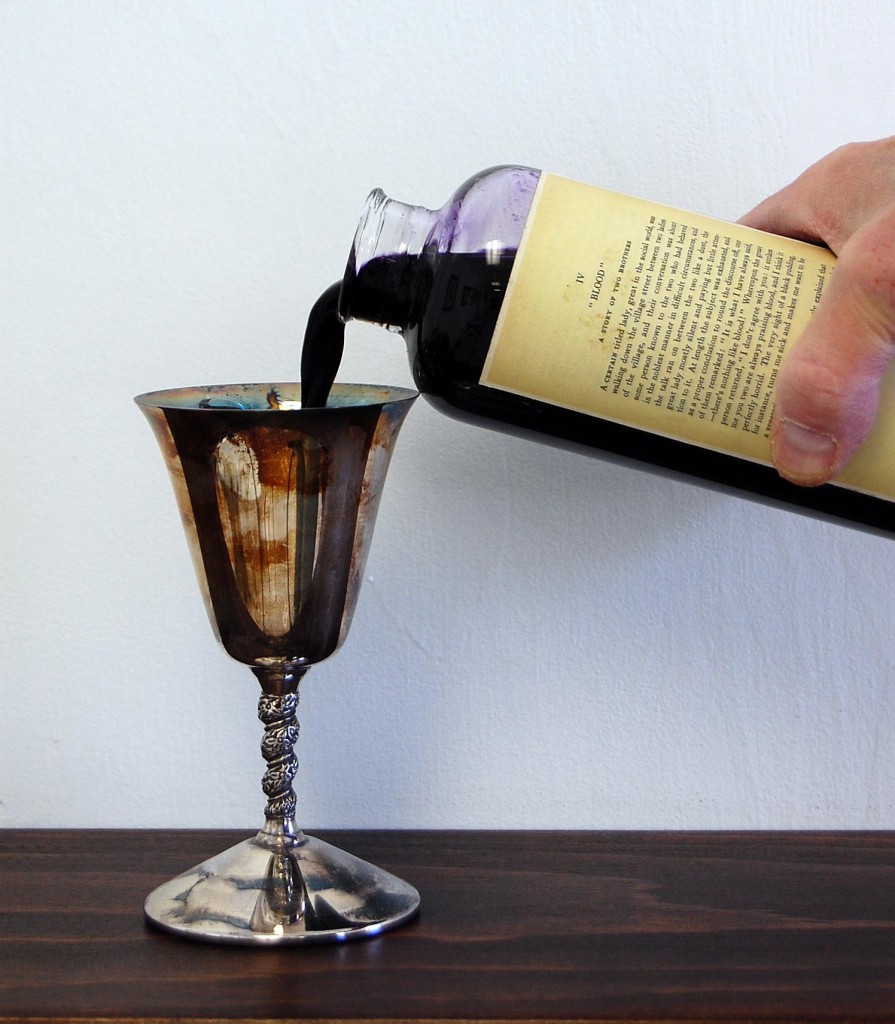
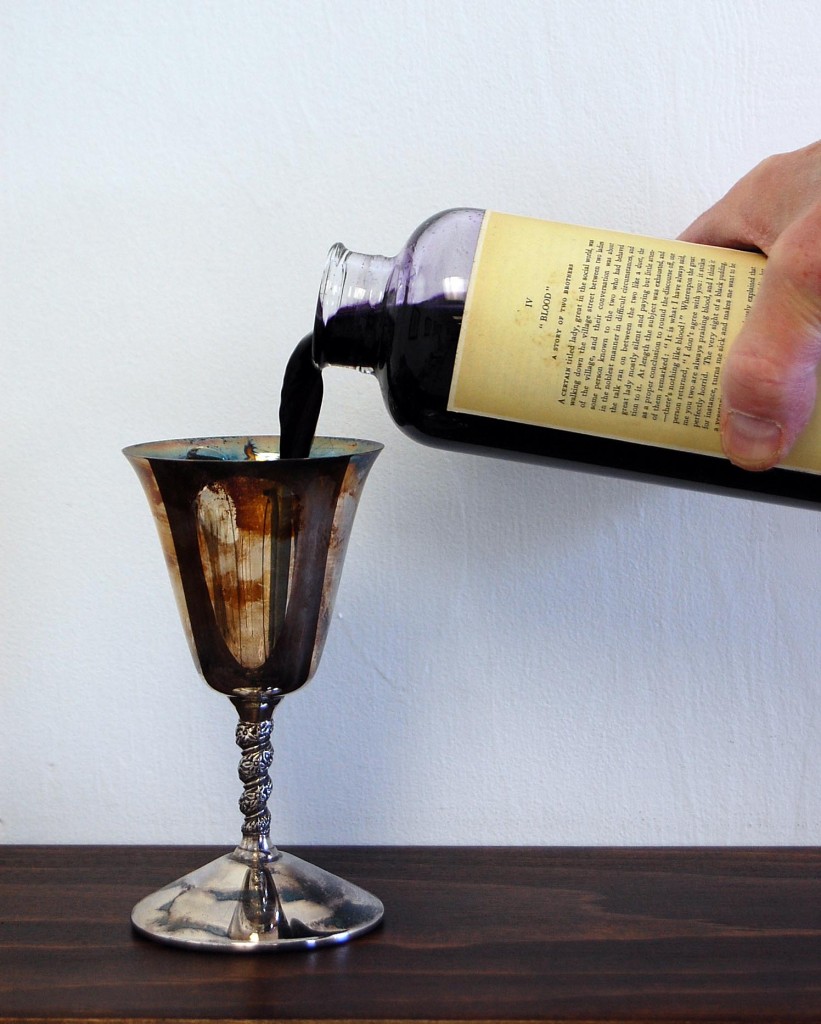
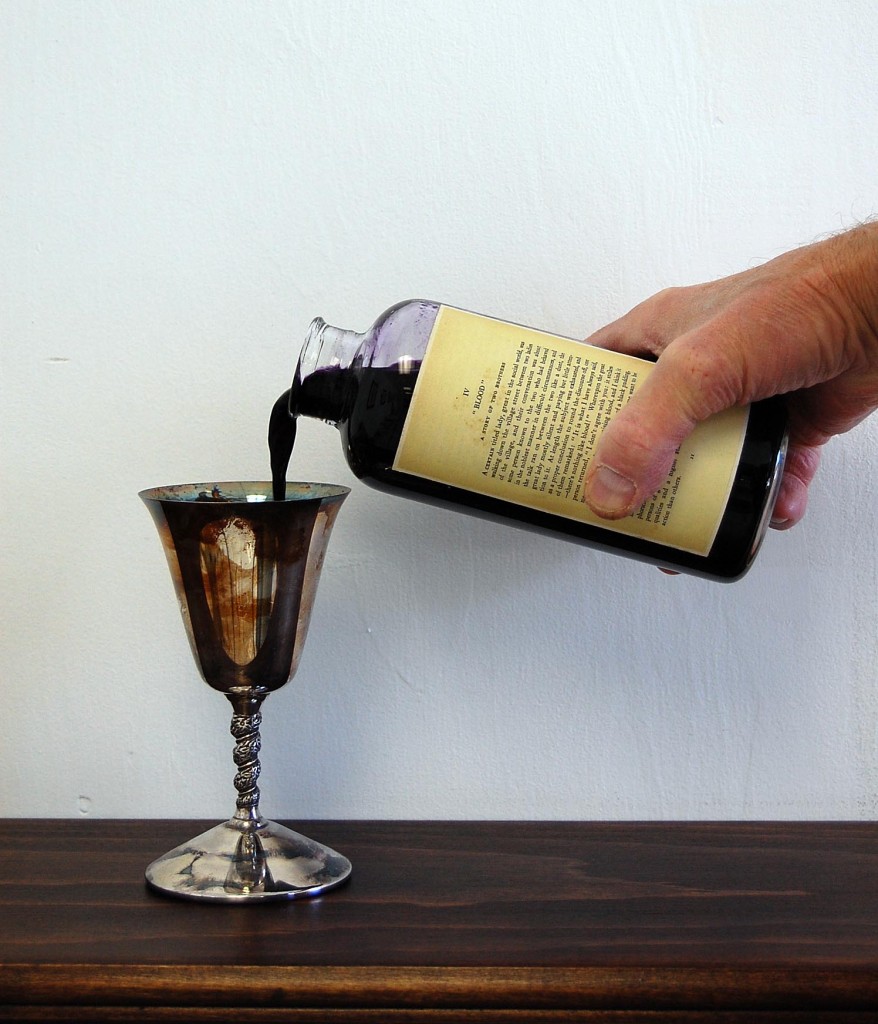
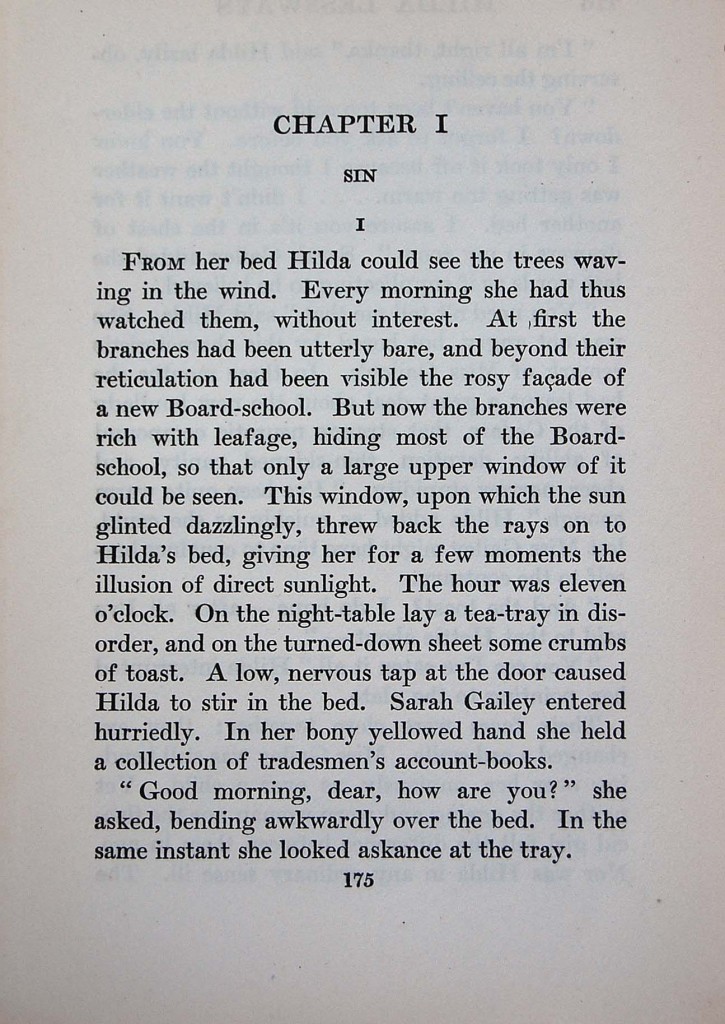
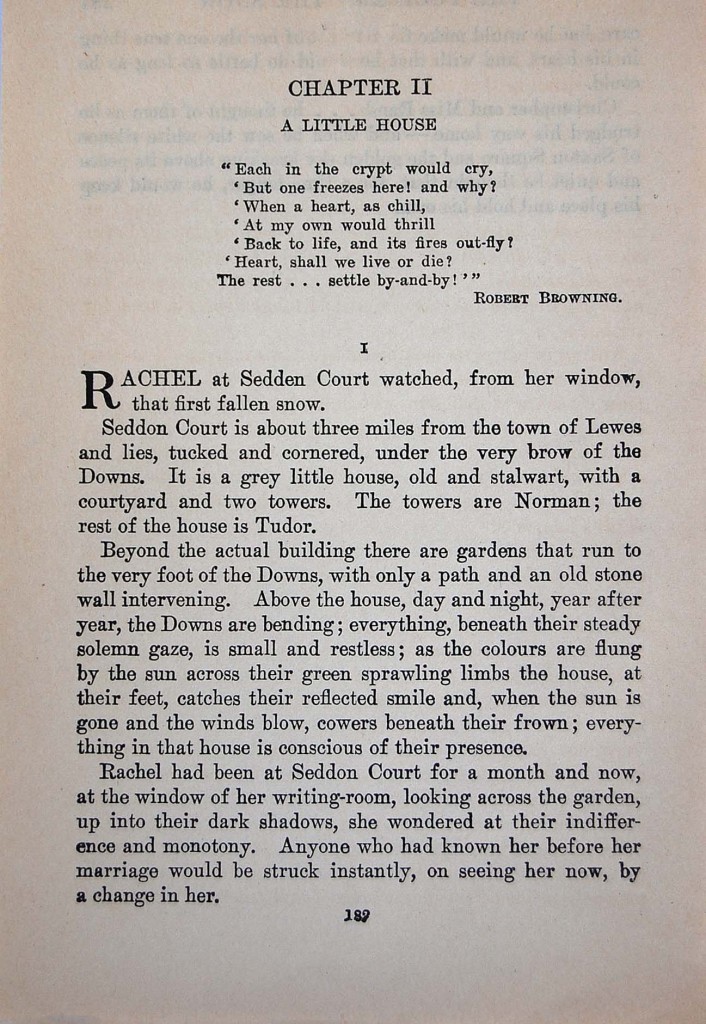
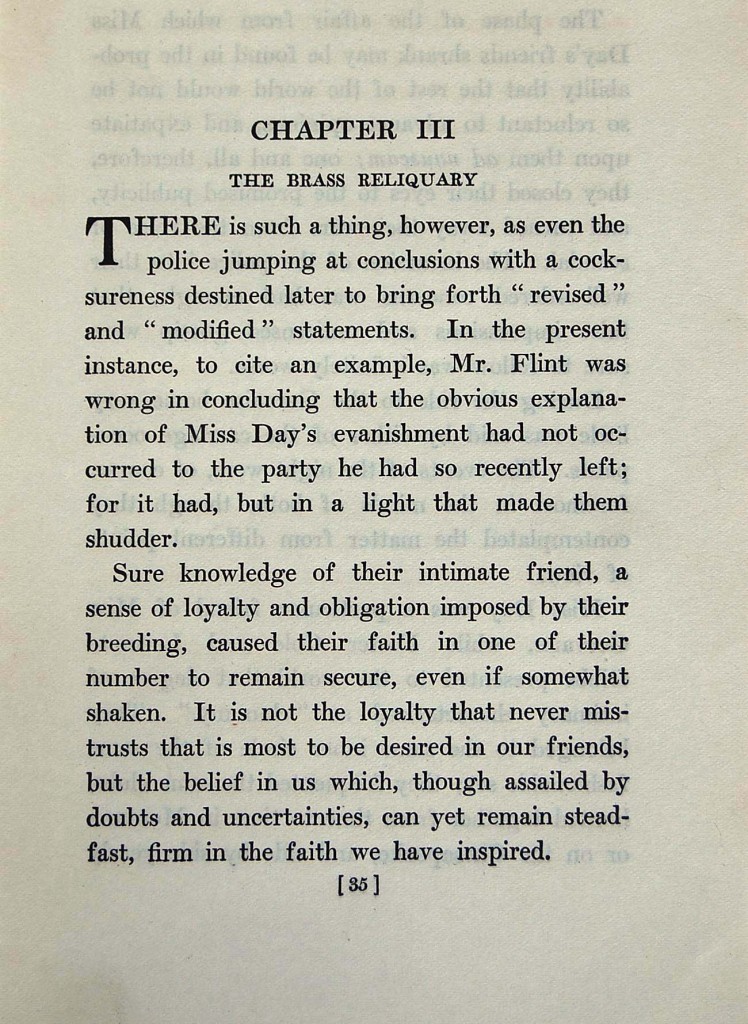
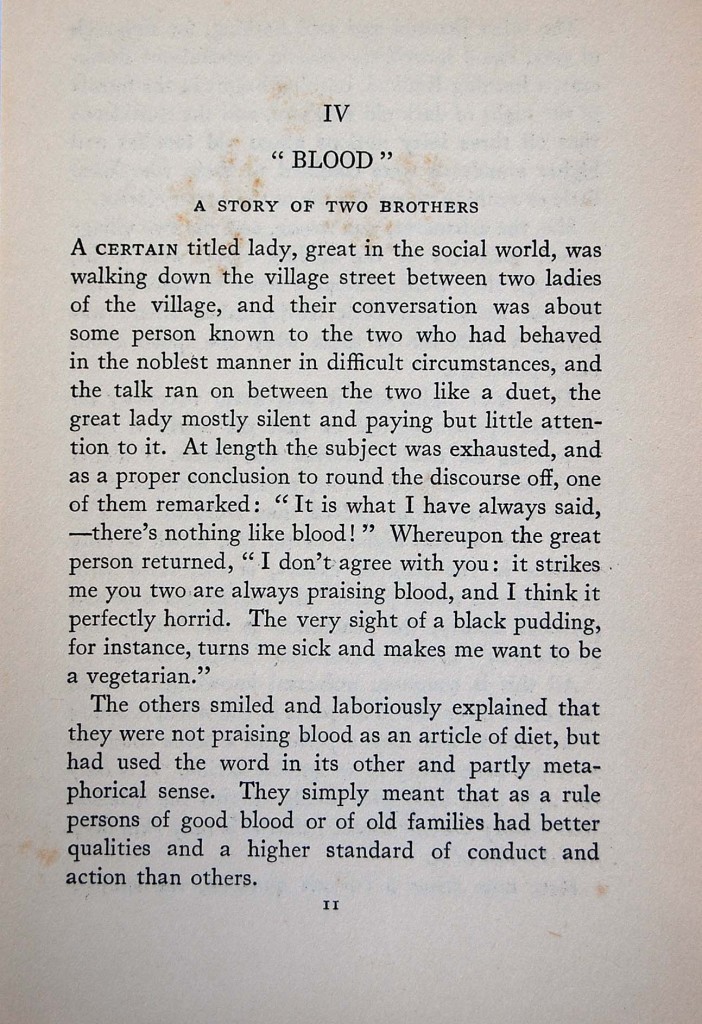
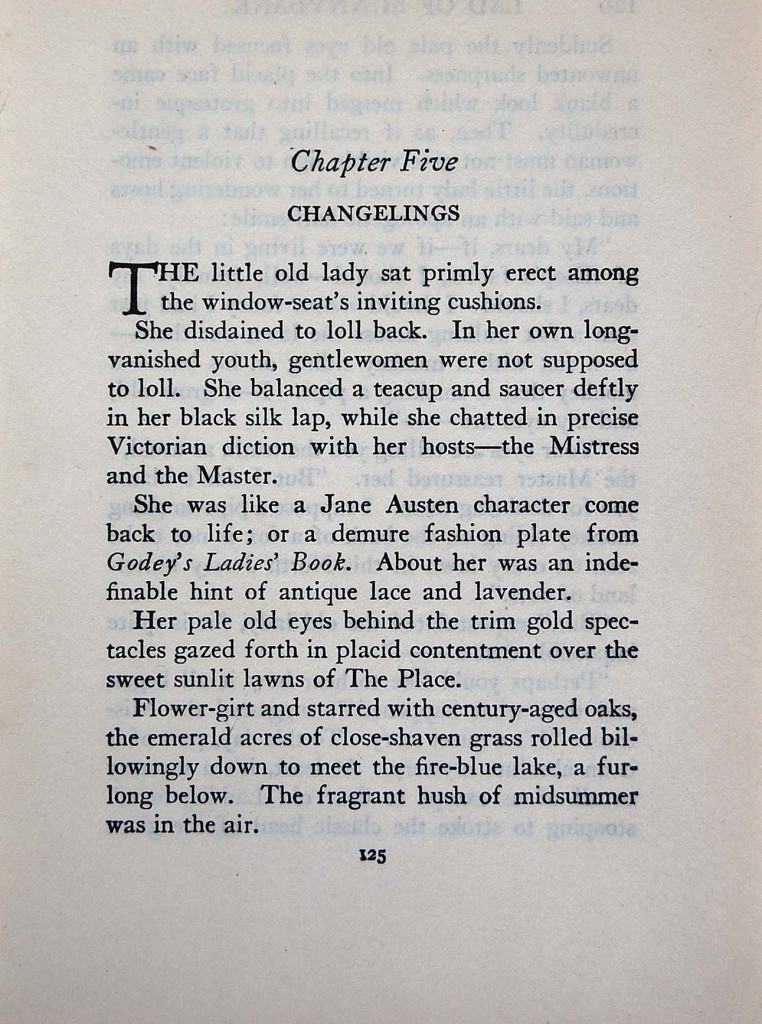
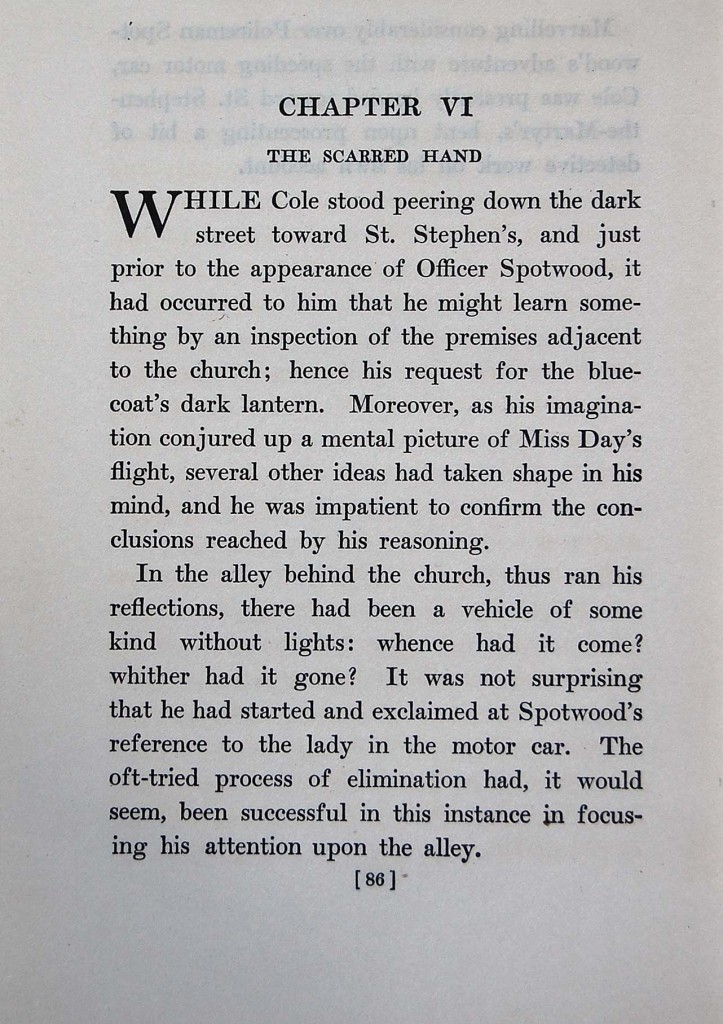
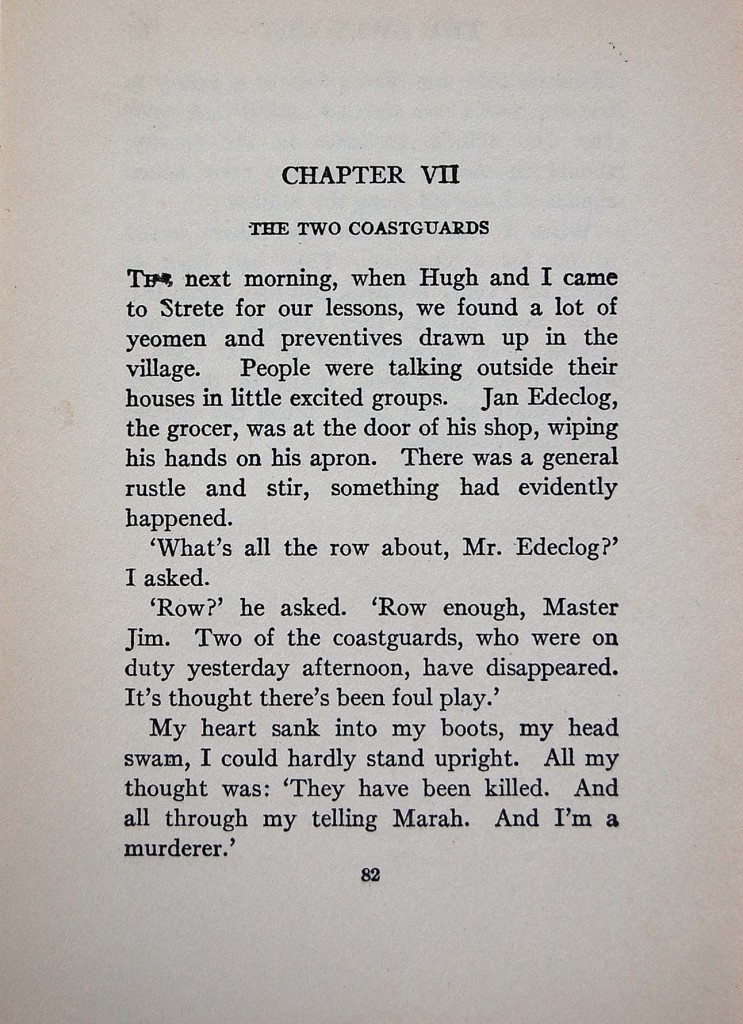
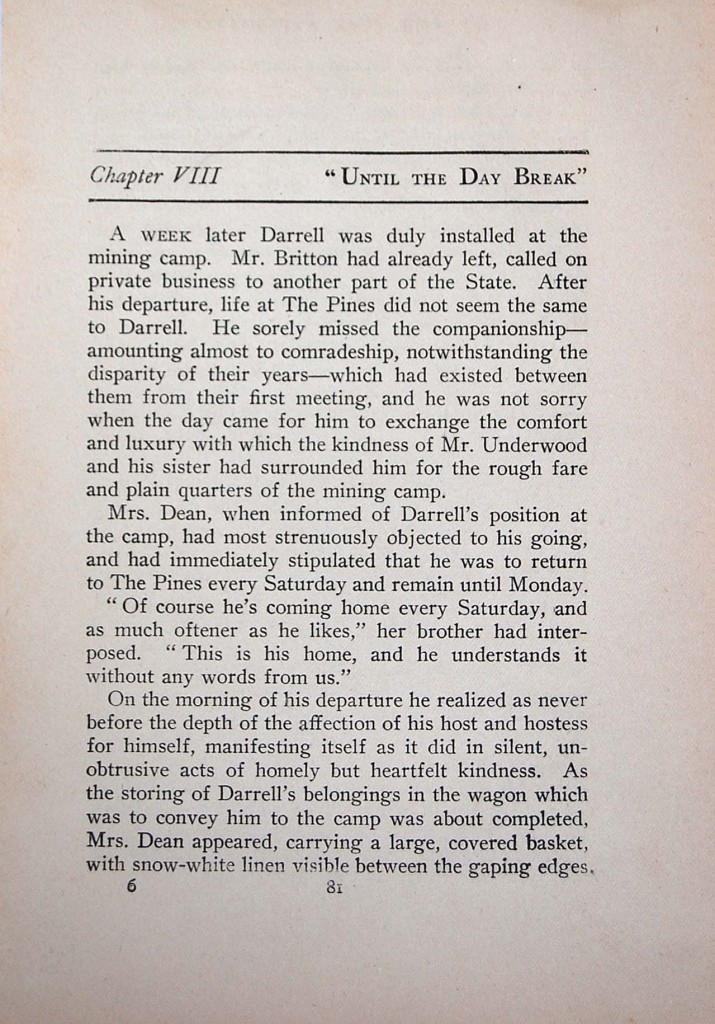
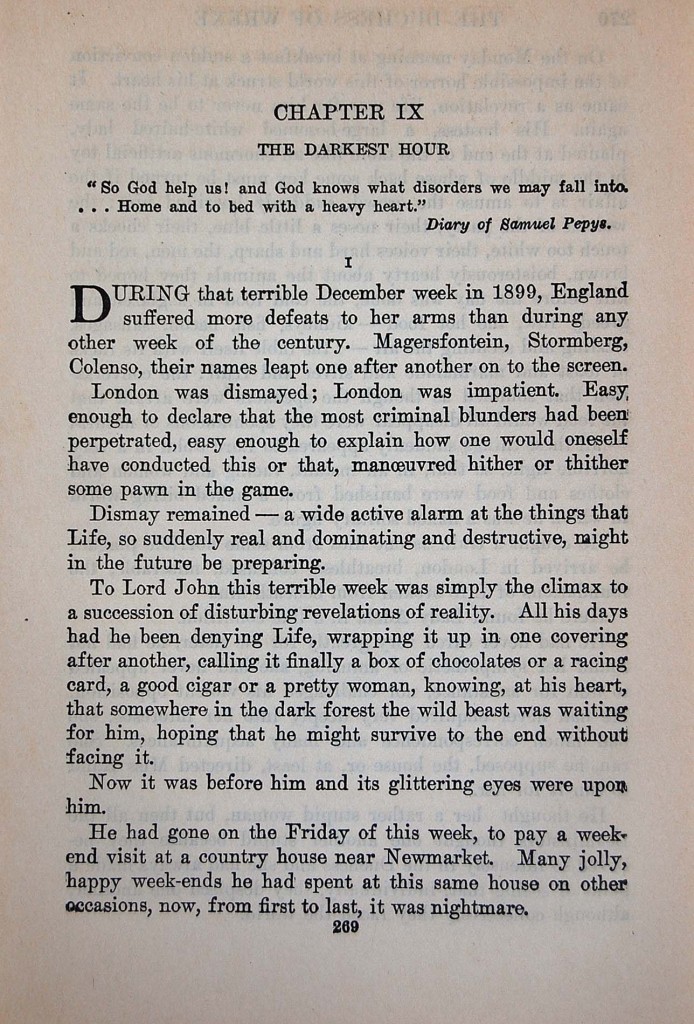
This is brilliant stuff. I love the successful combination of the concept and the implementation, the aesthetic of the actual installation (materials) and the abstract thinking and history behind it. Thanks for posting this on NC!
You are apparently an artist with strong analytical skills. Words, objects, materials …all can be combined in new ways to express thoughts and feelings. I consider the union of thought and feeling as a marriage …a fundamental process presided over by the imagination. I believe that this is part of the deeper significance of Apothecary.
Thank you for your comment! PF
“the union of thought and feeling as a marriage …a fundamental process presided over by the imagination.” Well put!
Yes! Alchemical texts indeed. I like the idea that the “complete” chapter may be IN the bottle, and one needs to pour and drink from it to ingest the story. Wonderful.
The enduring symbolism of alchemy is not always apparent in my work or as prominently referenced as it is in Apothecary. As you may know, the essence of alchemy is transmutation. To fully understand what this term implies psychologically speaking is, frankly, a great creative advantage.
Thank you for your comment! PF
Looking at this series again (and again) I realize I’m attracted also to the mystery (even melancholy) of the photos. Alchemy and transmutation are like cold-fusion – unproven in the lab. So the ink-into-gold nature of the stories (and of art in general) remains unexplainable and deeply personal (in fact, imbibed!)
I am going straight to the Web to look up any/all mention of Paul Forte. This is what I count on NC for – to widen the horizon. Thanks, Doug!
Thank you, Julie. It widens my horizons too. 🙂
I am always honored when someone new shows interest or appreciation for my work.
Thank you kindly. PF
Apothecary is another example of Mr. Forte’s vivid connection between words and the depth of the image. His poetic interpretation of seeing language as an object, as well as signifying meaning, has created a hologram of possibility in my imagination. In his art work, every concept he explores is and is not sacred.
The “vivid connection between words and the depth of the image,” as William Farley succinctly puts it, is the result of an awareness of a fundamental dialectic between the concrete materials of art and literature (printed or written language, and the media, substances, and physical objects used in artwork) and the formation of ideas. As I see it, the material shapes the idea which in turn informs (or re-informs) the material through a back and forth process. Imagination is central to this dialectic; it is the Alpha and Omega of the cognitive process.
In my view, no concept is “sacred,” although some concepts (for example, Descartes’ Cogito) would seem to be. But history has shown time and time again that even the most hallowed concepts are subject to revision if not outright overturning.
PF